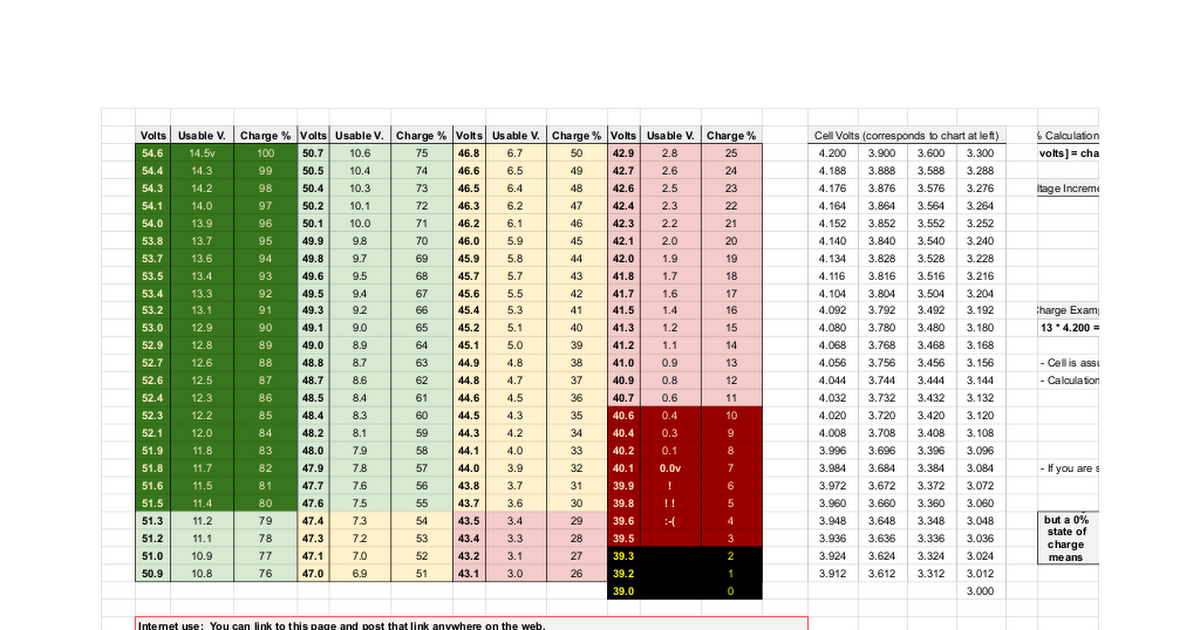Nvreloader
Western Nevada
- Region
- USA
Hey Guys
I have a question for those in the know about battery charging, as I am slightly confused,
The Wart Hog MD 750 has a battery size/type of 17200 cells = 48v-15ah-720wh,
I see on this site, that it is best to charge to 80% and then used down to 30%, for the battery cell types of 18650 etc,
Is it safe to use the same percentage when charging these 17200 cells?, or do I need to change the percentage ratio to something better?
I found this charging percentages chart: (there is several listed on the site, which I can't find now.)

 docs.google.com
docs.google.com
I have only charged my batteries twice, this last time was a max of 53.3v and an hour later it was down to 53.1v,
checked via volt meter.
My charger does NOT have scale, just an Idiot light that changes color etc, the spec's are as follows,
F300 Battery charger, input:110/220VAC-50/60hz-6A, Output: 54.6V-5A
The bikes display panel only shows percent scale used. I want to make a percent/scale to tape on the cross bar,
to be safe, so I don't end up pushing the out of the hills...... etc.
Your thoughts and suggestions,
Tia,
Don
I have a question for those in the know about battery charging, as I am slightly confused,
The Wart Hog MD 750 has a battery size/type of 17200 cells = 48v-15ah-720wh,
I see on this site, that it is best to charge to 80% and then used down to 30%, for the battery cell types of 18650 etc,
Is it safe to use the same percentage when charging these 17200 cells?, or do I need to change the percentage ratio to something better?
I found this charging percentages chart: (there is several listed on the site, which I can't find now.)
48v Li-Ion Charge Chart
I have only charged my batteries twice, this last time was a max of 53.3v and an hour later it was down to 53.1v,
checked via volt meter.
My charger does NOT have scale, just an Idiot light that changes color etc, the spec's are as follows,
F300 Battery charger, input:110/220VAC-50/60hz-6A, Output: 54.6V-5A
The bikes display panel only shows percent scale used. I want to make a percent/scale to tape on the cross bar,
to be safe, so I don't end up pushing the out of the hills...... etc.
Your thoughts and suggestions,
Tia,
Don

